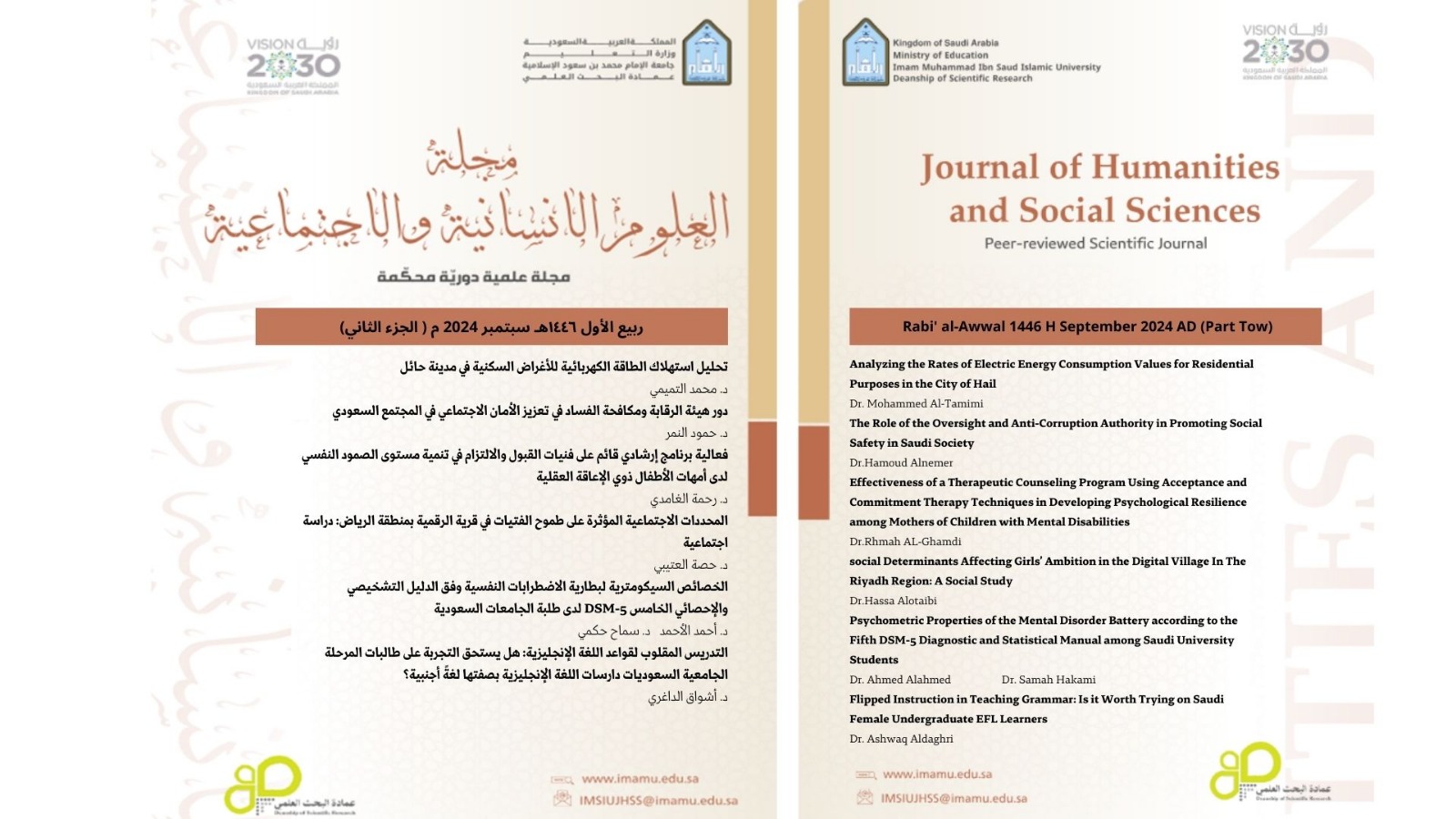Psychometric Properties of the Mental Disorder Battery according to the Fifth DSM-5 Diagnostic and Statistical Manual among Saudi University Students
Keywords:
psychological disorders, anxiety, sleep disorders, depression, and obsessive-compulsive disorder.Abstract
The main objective of the study is to verify the psychometric characteristics of the battery of mental disorders among university students according to the DSM-5. The tools were applied online to the sample available through the distribution of the Google forms, and the sample that responded to the scale consisted of (994) male and female students (531 males, 463 females). The average age of the sample was (21.37) years, and a standard deviation (2.17) years. The findings revealed that there are constructive models collecting the scores of items for each sub-scale of the battery measurements represented in (anxiety, sleep disorders, depression, and obsessive-compulsive disorder). They also showed the existence of one factor that encompasses these measures called mental disorders. They also indicated that he value of Ka2 was significant in the construction model of items and the ratio of Ka2 in the ideal range, the value of Ramsey (0.044) and the values of the conformity indicators ranged between (0.934-0.963). The results also confirmed the ability of the sub-scales that make up the battery to distinguish between those who admitted suffering from psychological problems and those who did not, and distinguished between students who received psychological assistance and those who did not receive assistance. The findings indicated that the values of stability coefficients of the mental disorders battery and its subcomponents were high using honesty coefficients, Alpha Cronbach persistence factor and split-half of Spearman Brown coefficient. The results also showed that there were statistically significant differences in the average scores of each of anxiety, depression, and obsessive-compulsive disorder between male and female students in the direction of female students as an indicator of higher levels of anxiety in females than in males, and no differences in the sleep disorders scale. The results of the previous hypothesis indicated that there were statistically significant differences in the mean scores of both sexes in anxiety, depression, and obsessive-compulsive disorder.




